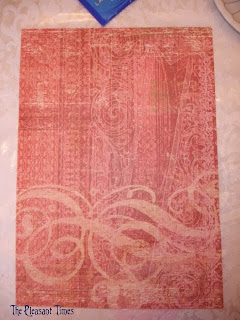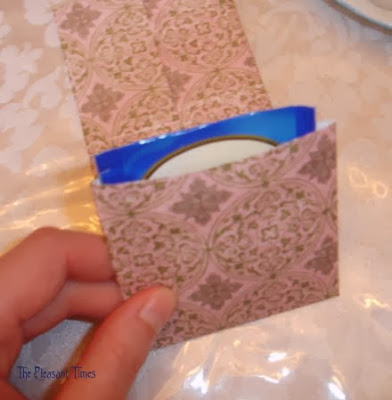Mother and Child Reading
Perry, Lilla...
Buy This Allposters.com
"COMMIT TO MEMORY
GEMS AND GOLD OF LITERATURE.
The favorite books of Tennyson were the Bible and Shakespeare. He once advised a boy to read daily at least one verse of the former and some lines of the latter. "The Bible," he said, "will teach you how to speak to God; Shakespeare will teach you how to speak to your fellows." It is well also to commit to memory many of these and other precious things, and thus make them our own in a way that the mere reading of them can never do.
"To what extent should the child memorize?" Of all people perhaps teachers are most to be congratulated upon the opportunities their work affords for the good of themselves and others. The best thought, most suggestive and most helpful, of the choice spirits of the ages, in its finest expression, is theirs—if they will have it. But is anything more true of thousands of teachers than that, in the midst of plenty, they starve their own souls and those of their pupils? Shall the memory be merely a sort of refuse chamber of odds and ends of personal experience, a junk shop collection of things of little value, or shall it be a treasure chamber filled with things of inestimable value, and radiant with light and beauty?
Let the habit of committing to memory be formed early. Let it be continued through school days, and all the after years of life... This habit once acquired and steadily followed is one of the most profitable and enjoyable, that can be formed by quiet people who never have occasion to make a public address; while to teachers who must frequently address their schools, to school, superintendents, clergymen, lawyers and public speakers generally, it is of immense value. To exercise the memory in the manner suggested is to strengthen it and to keep it strong. The imagination is at the same time cultivated, the vocabulary improved, and the best expression of the best thought of the masters becomes our own...
Reading in the Shadow
Blacklock, Kay...
Buy This Allposters.com
How many teachers can repeat accurately a half-dozen of the psalms, or a dozen choice poems of moderate length which the world has taken to its heart, or a like number of fine things in prose? How many have their pupils to commit these things to memory? They are the finest of the wheat, and they remain when the chaff and saw-dust of non-essentials in arithmetic, grammar, geography, and other branches are utterly blown away. Securely garnered in the memory, these things lift the life by lifting the thought, the love. They elevate the entire being into a finer and purer atmosphere, make distasteful things that are low and mean, present new ideas and new aspirations. Through them more and more we walk by faith in the unseen. And of all education—all feeding of mind and heart from childhood to old age— this is the rarest and the best...
The Reading Lesson
Green, Richard...
Buy This Allposters.com
We like the practical thought of Tennyson, which makes one part of this work all the while moral and religious. Let the selections for the week be, if possible, two in number, the first from the Bible or sacred song, and the second from the world of literature, prose or verse, in other directions—say, the ninetieth psalm and "Lincoln's speech at Gettysburg;" or "Lead Kindly Light" and Longfellow's "Psalm of Life;" or the twenty-third psalm and Lowell's "Once to Every Man or Nation;" or the nineteenth psalm and "Home, Sweet Home;" or "My Country 'Tis of Thee" and "The Chambered Nautilus ;" or the thirteenth chapter of Corinthians, and "The Last rose of Summer;" or any others of hundreds of good things moral, religious, patriotic, descriptive, or sentimental in the best sense of the word, that we should all be very glad to have securely lodged in the memory. And let the teacher always commit to memory what is here required of the pupil. Should two each week be one to many, let the selections alternate, sacred and secular, one each week.
Young Girl Writing at Her Desk with Birds
Browne, Henriette
Buy This Allposters.com
Any good book of varied and choice selections can and should be supplemented by the Bible, and by a manuscript collection of best things dictated by the teacher, and written down by the pupil. In our own school two hours on Tuesday morning are given to this exercise. The selections for the week that have been memorized are first written by all the pupils, effort being made to reproduce them with spelling, capitals and punctuation, as found upon the page. The books are then exchanged, the selections read by the teacher, all errors marked by the pupil, and the work graded accordingly. The selections for the following week are then announced, read and discussed at such length as time may permit, attention being directed to anything new or of especial interest which might be overlooked by the pupil.
Memorize accurately. Get it as the author left it, the exact words he used, and each word in its place. See the capital letters, the spelling and meaning of unusual words, and the punctuation marks, so that you could write it as "copy" for the printer. This requires care, close observation, thought, and encourages the habit of close attention. In committing to memory also try to see the page in your mind as it lay before you.
An aid of some value is to use the pencil and the ordinary "four and tally" count. For each stroke, with the pencil held upon it, repeat the sentence, or line, or verse, or selection. This enables the pupil to keep ready count of the number of times he or she has repeated it. For a time the school might do this work aloud and in unison, so that all would fall in with the method. This means close strain upon the attention, but it means definite result as well.
Each pupil should have a blank book in which these things may be written from dictation or copied from the blackboard. Such book will be highly prized in after years."
From the Northwest journal of education: Volumes 2-3 - Page 134 1890

















































